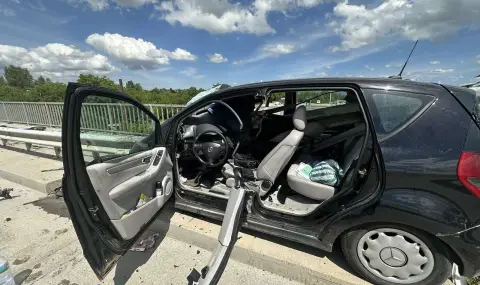"War on the Roads“ has been a cliché for years, behind which there are thousands of personal stories, but until today there was no clear diagnosis of the “epidemic” from traffic crimes.
Now, for the first time, the Council for Criminological Research, restored by the former Acting Minister of Justice Krum Zarkov, has outlined the exact picture of crimes and criminals behind the wheel, "Lex" reported.
The Council, chaired by the Minister of Justice Maria Pavlova, adopted the final report on it. The study tracks and analyzes the data on road crimes, the legislative framework and its changes, the judicial practice, the main problems in the implementation of the relevant norms of the Criminal Code and the Criminal Code, as the period 2016-2021 is compared with 2010-2015.
It can be used to profile the mass criminal on the road. He is an unmarried man, under 39 years old, with at most a high school education, driving under the influence of drugs and will receive a suspended sentence.
The report shows that the largest share of crimes under Art. 343b of the Criminal Code, criminalizing the driving of motor vehicles after the use of alcohol and narcotic substances. They represent an impressive 75.6% or three quarters of all traffic offenses punished in the country for the period 2010-2021.
Most often crimes on the road are committed by unmarried men with secondary or primary education aged 18-39.
Most convicted female motor vehicle drivers are of the same age range, with the number of women aged 40-49 growing rapidly. Among women, unlike men, convicts with secondary and higher than secondary education predominate.
Convicted of driving a motor vehicle after using drugs, as well as unlicensed drivers, are predominantly young people aged 18-29.
Art. 343b, para. 1 of the Criminal Code incriminates driving a motor vehicle with a duly established blood alcohol concentration of over 1.2 per thousand.
This crime occupies the largest share in the structure of punishable acts under Art. 343b of the Criminal Code – 78%. For the period 2010-2021, a total of 62,355 crimes were punished.
There is a tendency to strongly limit the application of effective sentencing. While in 2010-2015 cases were completed with an effective sentence for 63.4% of the crimes punished during the period, in 2016-2021, 7.3% (1940) of all crimes during the period were punished with an effective conviction.< /p>
At the end of the researched 12-year period, those punished with effective sentencing decreased by 94.1% compared to the beginning of 2010.
„The serious drop in crimes punished with the application of effective sentencing in 2016 compared to 2015 by -78.4% is impressive, which continues at a slower pace, and towards the end of the period there is a slight increase”, the experts write.
„The tendency to increase is clearly expressed and strengthened both for the entire 12-year period, when the punishable offenses for driving a motor vehicle after the use of drugs increased 784 times compared to 2010, and in each of the two periods studied by separately. …After the changes in the Criminal Code at the beginning of the second considered period 2016-2021, the number of punished crimes is growing at a high rate – in 2017 – 5.4 times or by 436.5% compared to 2016, in 2018 – by 139% compared to 2017, in 2021 – by 25.8% compared to 2020”, the authors of the study indicate.
The number of drug-impaired driving convictions may be increasing significantly, but data shows that the more widespread this crime becomes, the more widespread suspended sentences are imposed for it.
„ Only traffic crimes related to the use of alcohol or drugs are increasing, the reasons and conditions for them must be considered comprehensively and work should be done mainly on their prevention,” commented Associate Professor Dr. Salkova. And he recalls the recommendations of the World Health Organization that the system should always take into account the possibility of human error and work in such a way that it does not lead to serious consequences even in case of human error.
„One third of the cases reviewed by the Supreme Court of Cassation last year were classic road crimes,” Judge Krasimir Shekerjiev from the research team reported. Penalties are primarily imprisonment, most of them – conditional.
He did not hide his disappointment that while they were researching, summarizing and analyzing the data that could serve for reasonable legislative initiatives, last August the parliament changed the Criminal Code in the part about road crimes, and the Supreme Court found the amendments unconstitutional. “Please use our report in a useful way!“, the Chief Justice addressed the Council.
Ekaterina Salkova reported the presence of serious difficulties with basic expertise such as auto technical and toxicology. With the first, the main problem is the small number of experts who perform qualitative examinations, with the second – the long time to examine the samples. The team's recommendation is to strengthen the capacity for expertise.
Attention was also drawn to the shortage of traffic police teams in Sofia, which deal with car accidents. This leads to delays and sometimes to distortions of the law, judge Shekerjiev stated.
The results of the research will be presented and discussed publicly.
